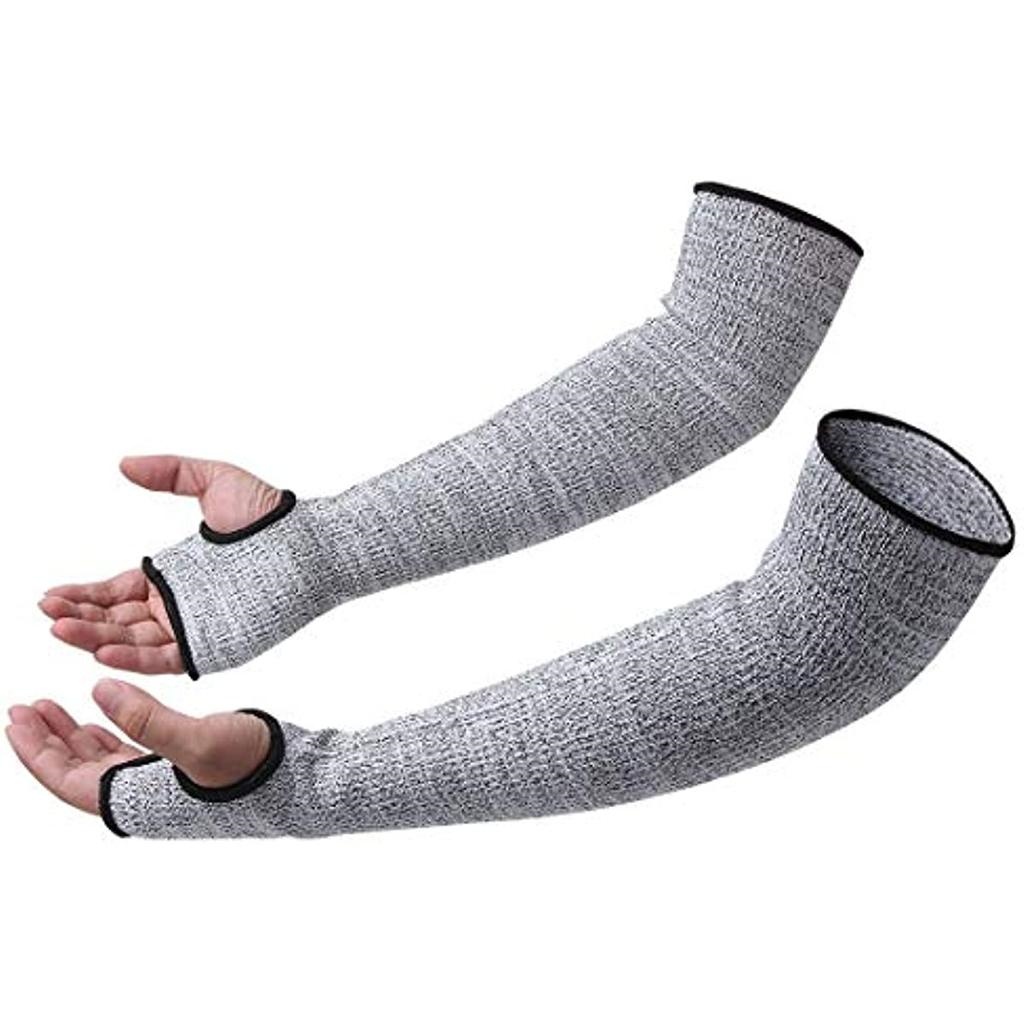In industrial operations, machinery work, or construction sites, arms are often exposed to sharp tools, metal edges, or glass fragments. Regular clothing cannot provide sufficient protection, which can lead to cuts, abrasions, or even severe injuries. Cut-resistant sleeves, a key component of personal protective equipment (PPE), provide effective arm protection. This article will explore the materials, functions, and proper usage of cut-resistant sleeves, helping companies and workers improve workplace safety.
Main Content
1. Key Materials of Cut-Resistant Sleeves
Cut-resistant sleeves are typically made from high-strength fibers and composite materials. Different materials offer different levels of protection:
-
Kevlar
Lightweight and cut-resistant, suitable for light to medium industrial operations. -
Ultra-High Molecular Weight Polyethylene (UHMWPE)
Strong cut protection, ideal for heavy industry or steel processing environments. -
Nylon or Polyester Blends
Provide moderate protection while ensuring breathability and comfort, suitable for long working hours.
Material combinations can also enhance durability and flexibility, ensuring arm protection without limiting mobility.
2. Features and Benefits of Cut-Resistant Sleeves
-
Prevent Cuts and Abrasions
Reduces injuries caused by sharp objects like blades, glass, and knives. -
Maintain Arm Flexibility
Well-designed sleeves fit snugly without affecting hand operations. -
High Durability
Quality materials ensure long-term use and lower replacement costs. -
Comfort and Breathability
Modern cut-resistant sleeves balance protection with comfort for extended wear.
3. How to Choose the Right Cut-Resistant Sleeve
-
Work Environment: Choose UHMWPE or Kevlar for heavy-duty operations; nylon blends work for light-duty tasks.
-
Protection Level: Check EN388 or other international safety standards to ensure compliance.
-
Fit and Size: Select sleeves that match arm length and thickness; avoid sleeves that are too tight or loose.
-
Breathability: For long shifts, prioritize breathable sleeves to reduce sweating and discomfort.
4. Usage and Maintenance Tips
-
Proper Wearing: Ensure sleeves cover the entire forearm without leaving exposed skin.
-
Regular Inspection: Replace worn, torn, or stretched sleeves promptly.
-
Washing Instructions: Follow manufacturer guidelines, typically hand wash or low-temperature machine wash to avoid material damage.
-
Storage: Keep sleeves dry, away from heat, moisture, and sharp objects to maintain longevity.
Conclusion
Cut-resistant sleeves are more than just PPE—they are essential for worker safety. Choosing the right material and size, using them correctly, and maintaining them properly can significantly reduce the risk of arm injuries, improve workplace safety, and boost worker confidence and efficiency.


